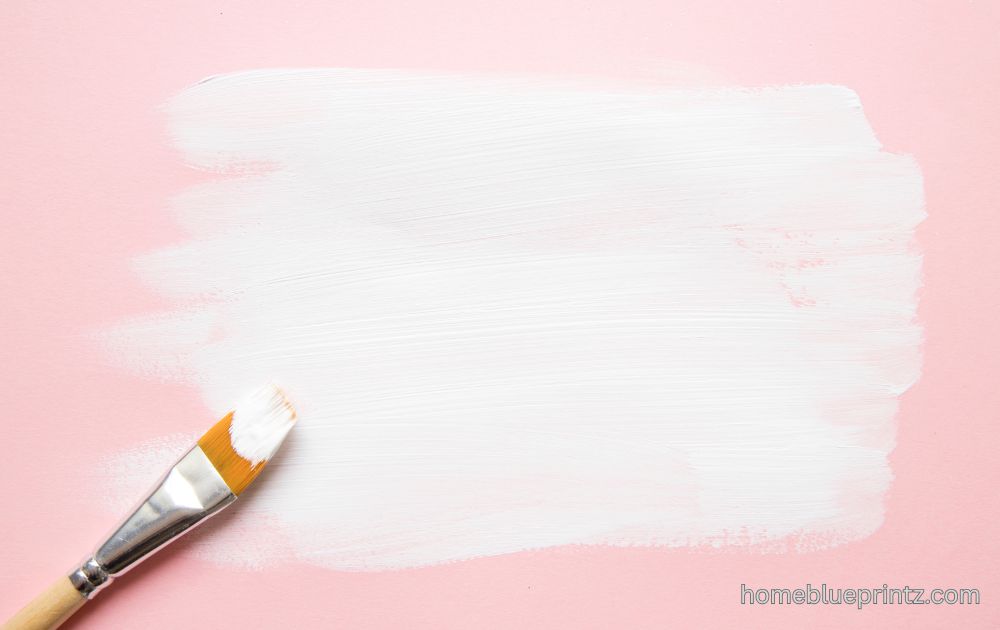Simply White: A Complete Guide to the Perfect Neutral Shade
When people hear “white paint,” they usually think of something plain or boring. But anyone who has chosen paint for their home knows that white is far from simple. One shade can look warm and cozy, while another feels crisp and modern. Out of hundreds of options, Benjamin Moore’s Simply White (OC-117) has become a household favorite. It was even named Color of the Year in 2016, proving that this shade is anything but ordinary.
Understanding Simply White
Simply White isn’t just another white paint; it’s a carefully balanced shade that feels fresh yet inviting. Unlike stark whites that can appear cold, it carries a gentle warmth that softens any space. With an impressive light reflectance value, it naturally brightens rooms and makes them feel more open. Its subtle undertones prevent it from leaning too yellow or too gray, ensuring a timeless look. This unique balance is what makes Simply White a favorite among homeowners and designers alike.
The Appeal of Simply White in Interior Design
Simply White has become a designer’s secret weapon because of its ability to adapt to any style. It brightens up a room without feeling too harsh, creating a warm yet airy atmosphere. Whether you’re aiming for a modern, minimalist look or a cozy, traditional vibe, this shade delivers effortlessly. Its versatility allows it to work as a main wall color, trim, or even cabinetry, making it a timeless choice. In short, Simply White strikes the perfect balance between crispness and comfort in interior design.
Where to Use Simply White
Simply White is one of those rare shades that can be used almost anywhere in the home. On walls, it creates a clean, timeless backdrop that pairs well with any décor style. For trim and moldings, it highlights architectural details beautifully, adding depth and elegance. In kitchens, Simply White cabinets feel fresh and inviting while maintaining a cozy warmth. Even ceilings painted in Simply White can make rooms appear more open and airier.
Pairing Simply White with Other Colors
One of the best things about Simply White is how easily it pairs with other shades. It complements soft neutrals like beige and gray, creating a calm and balanced look. When paired with bold tones such as navy or emerald green, it offers a striking contrast that feels modern and chic. Natural wood accents also shine beautifully against this warm white backdrop. Simply put, it’s a flexible partner that enhances both subtle and dramatic color schemes.
Comparing Simply White to Other Popular Whites
When placed side by side with other whites, Simply White shows just how unique it is. Compared to Chantilly Lace, it feels warmer and less stark, making it easier on the eyes. White Dove leans creamier, while Simply White maintains a fresher, brighter tone. Decorator’s White, on the other hand, carries cooler gray undertones that contrast with Simply White’s subtle warmth. These differences highlight why Simply White remains such a versatile, balanced choice among Benjamin Moore’s popular whites.
Pros and Cons of Choosing Simply White
Simply White is admired for its versatility and brightness, but like any paint shade, it has both strengths and drawbacks depending on your space and lighting.
Pros:
-
Works with almost any décor style, from modern to traditional
-
Reflects light beautifully, making spaces feel open and airy
-
Timeless and versatile—great for walls, trim, and cabinetry
Cons:
-
Can reveal slight yellow undertones under warm artificial lighting
-
May appear too bright in direct sunlight if not balanced with other colors
-
Needs testing in your own space to ensure the right effect
Tips for Painting with Simply White
When painting with Simply White, it’s important to consider lighting, finishes, and how it blends with your décor. A few smart steps will help you get the best results.
-
Test samples in different areas of the room at various times of the day.
-
Use matte for ceilings, eggshell for walls, and semi-gloss for trim.
-
Compare it against your furniture and décor before finalizing.
-
Check both natural and artificial lighting to see undertones clearly.
Real-Life Applications of Simply White
Simply White shines in real homes because it blends seamlessly into different design styles. In modern spaces, it highlights clean lines and creates a fresh, uncluttered backdrop. For traditional interiors, it enhances moldings, wainscoting, and detailed trims beautifully. Coastal and farmhouse designs also benefit, as it pairs perfectly with natural wood, linen, and light textures. No matter the style, Simply White transforms rooms into inviting, timeless spaces.
Professional Touch with Hyannis Painting
For homeowners in Cape Cod, Massachusetts, Hyannis Painting offers expert interior painting services that bring out the best in shades like Simply White. Their skilled team understands how lighting, texture, and finish affect the final look of a color. Whether you’re refreshing a single room or transforming your entire home, Hyannis Painting ensures a flawless, professional result that enhances the timeless beauty of Benjamin Moore’s Simply White.
Maintaining and Enhancing Simply White
Keeping Simply White looking fresh is easier than most people think. Regular dusting and occasional wipe-downs help prevent dirt or smudges from standing out on its bright surface. Because it’s such a forgiving shade, small touch-ups blend seamlessly without noticeable patches. Pairing it with seasonal décor—like warm tones in winter or light accents in summer keeps spaces feeling updated. With a little care, Simply White continues to shine as a timeless and elegant backdrop.
The Future of White Paint Trends
White paint will always remain a staple in home design, but the future is about finding balance between crisp and warm tones. Simply White continues to shine because it adapts to changing décor styles and lighting trends. As people lean toward natural materials and softer aesthetics, whites with subtle undertones will dominate. Homeowners will favor versatile shades that complement both bold and neutral palettes. In the years ahead, white paints like Simply White will stay timeless while evolving alongside modern design preferences.
Conclusion
Simply White proves that white isn’t boring it’s a design powerhouse. From kitchens to bedrooms, it works everywhere, adapting to different lighting, décor, and styles. If you want a timeless, fresh, and welcoming space, Simply White is the shade that never fails.
FAQs about simply white
Q1: Is Simply White too bright for walls?
Not at all. Its subtle warmth prevents it from feeling stark, making it a balanced choice for walls.
Q2: Does Simply White look yellow in certain lights?
Yes, in warm artificial light, it can show faint yellow undertones. Testing a sample helps.
Q3: What is the best trim color to pair with Simply White?
Simply White itself works perfectly, but Chantilly Lace offers a crisper trim contrast.
Q4: Is Simply White a good choice for exteriors?
Yes, it gives exteriors a fresh, timeless appeal but may look brighter under full sunlight.
Q5: How does Simply White compare to other Benjamin Moore whites?
It’s warmer than Chantilly Lace, softer than Decorator’s White, and less creamy than White Dove.
Share this content:











Post Comment